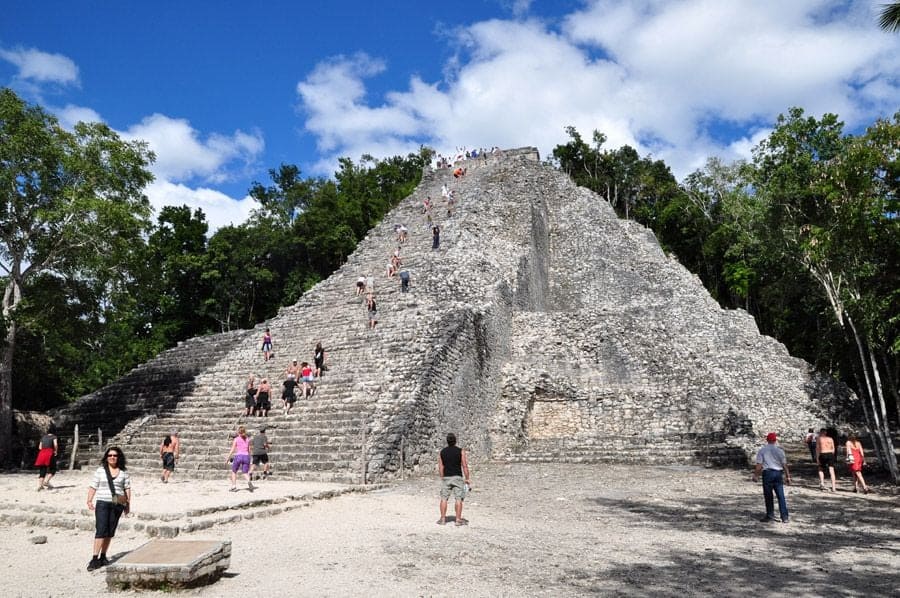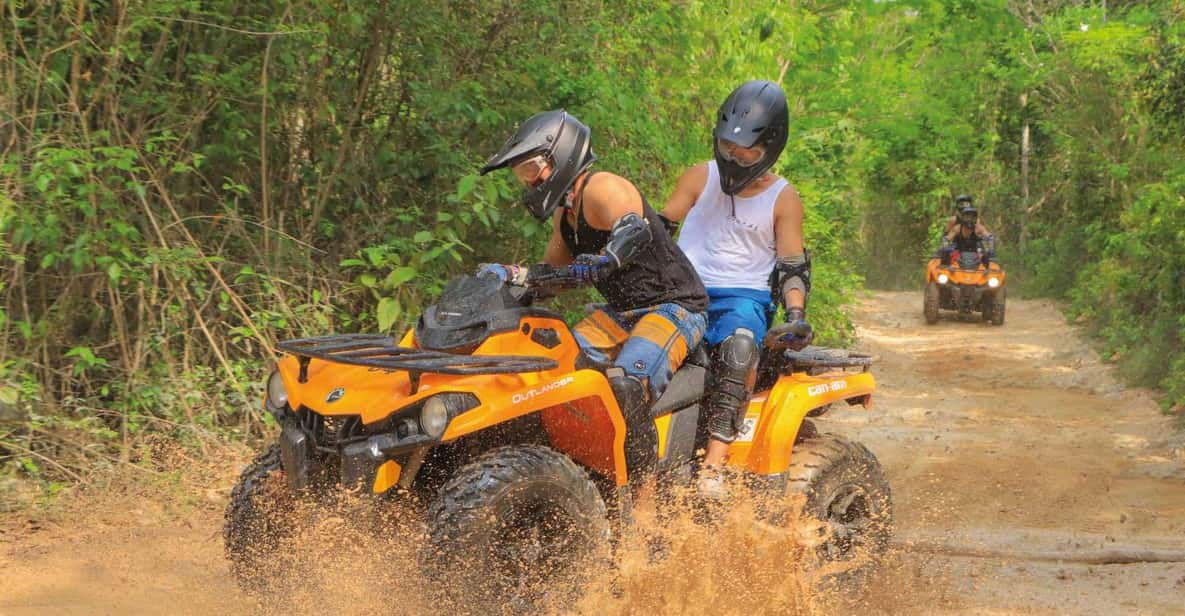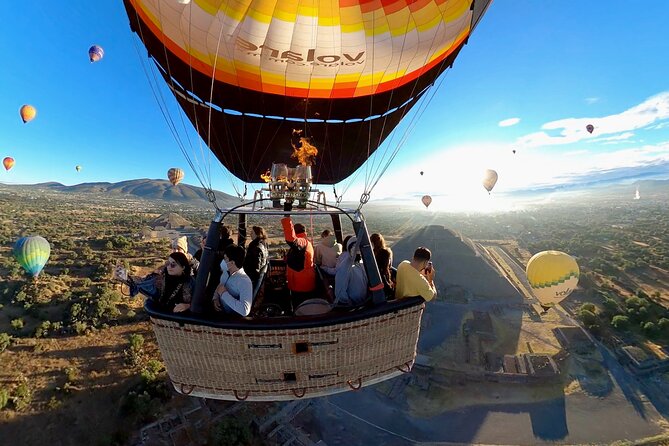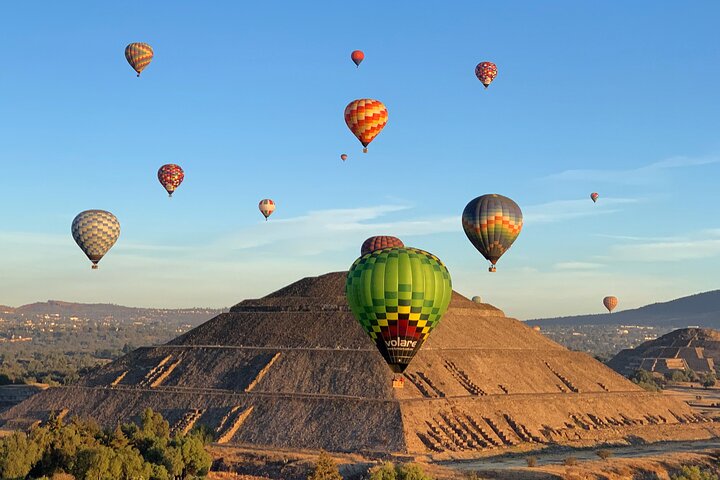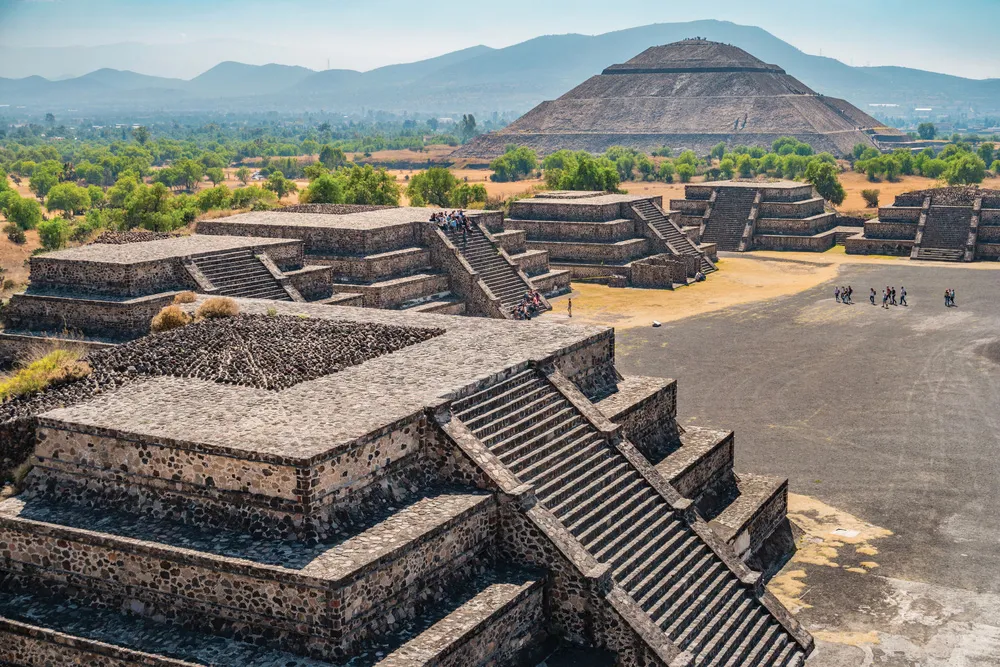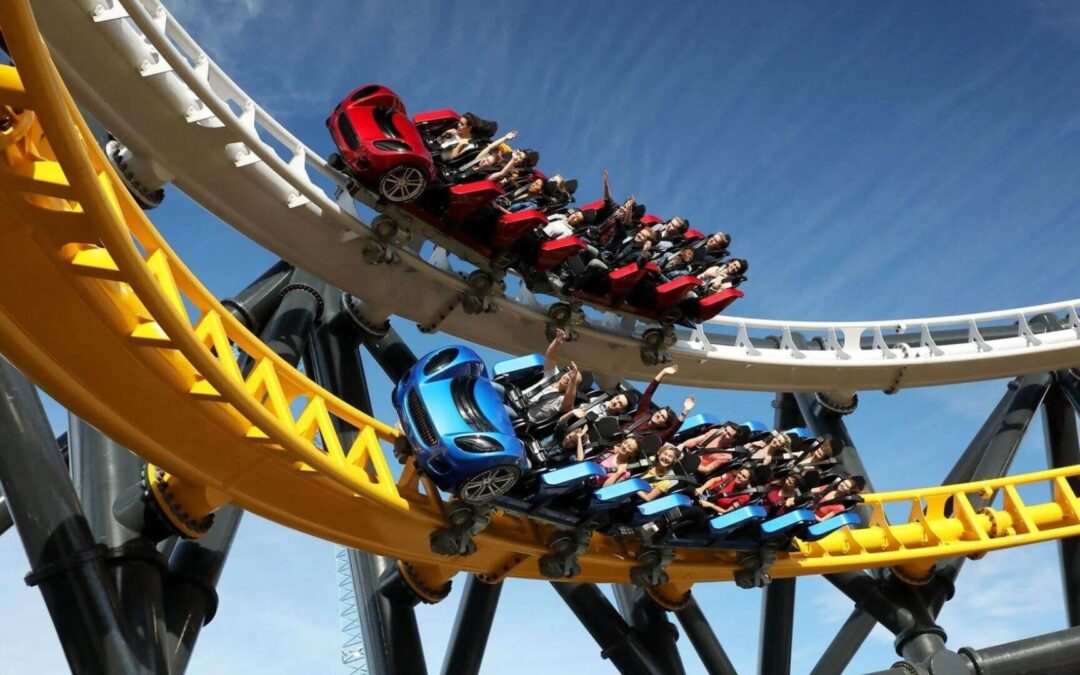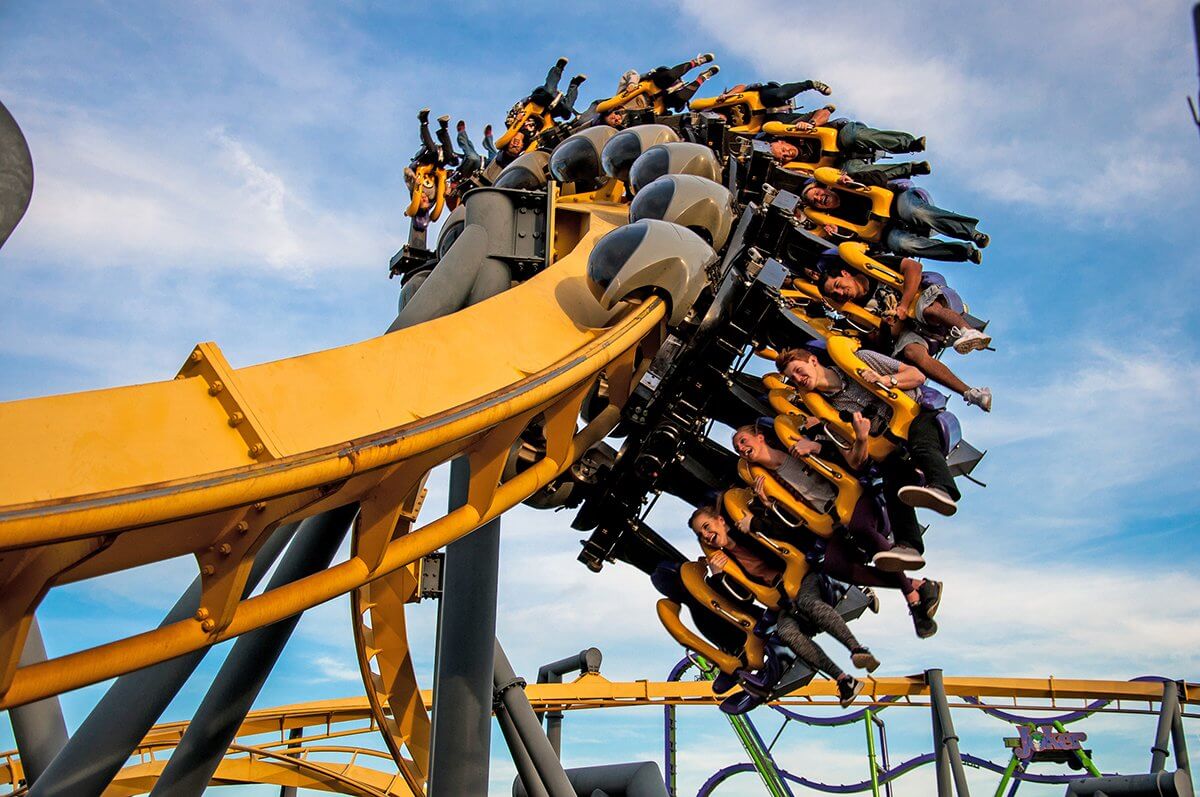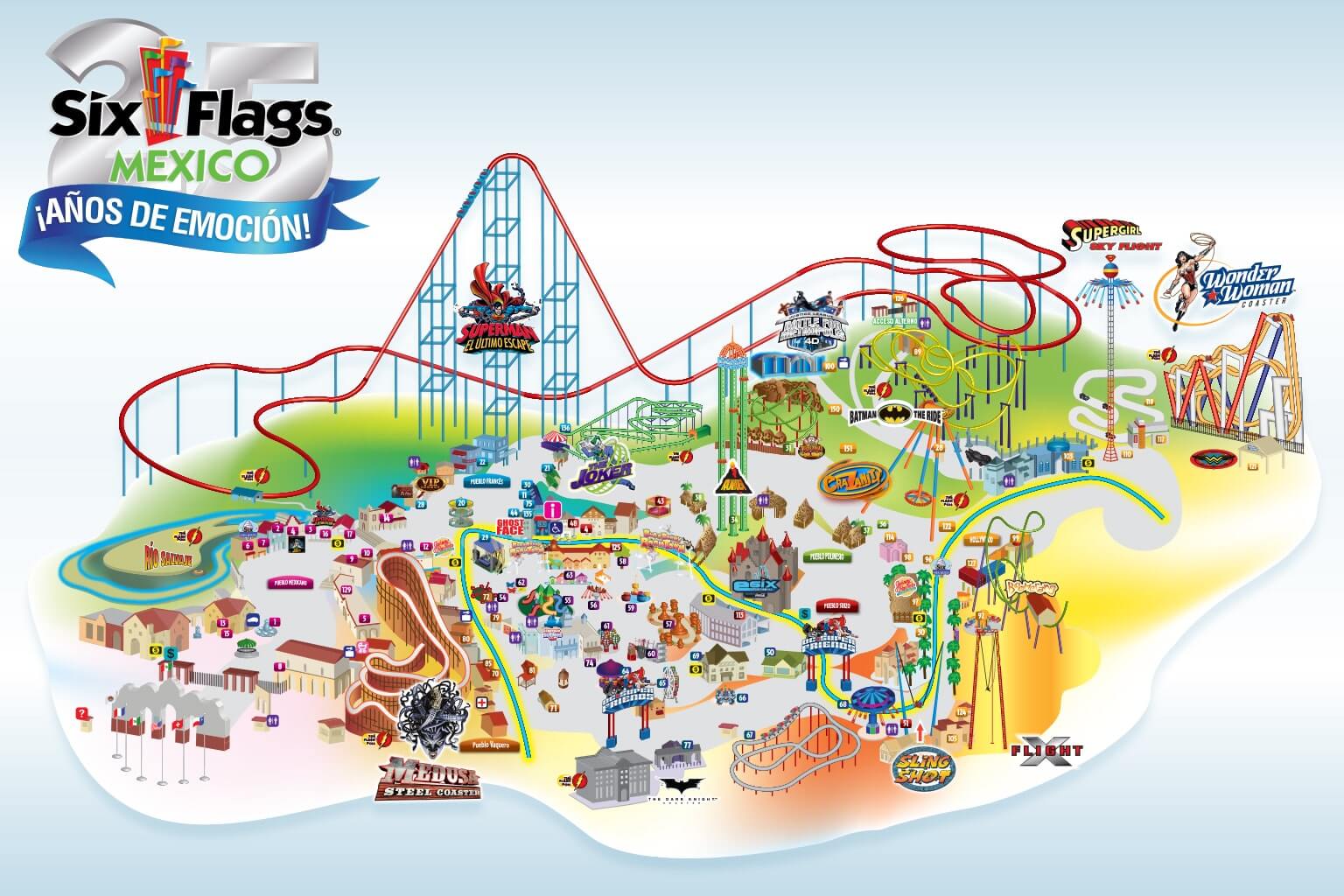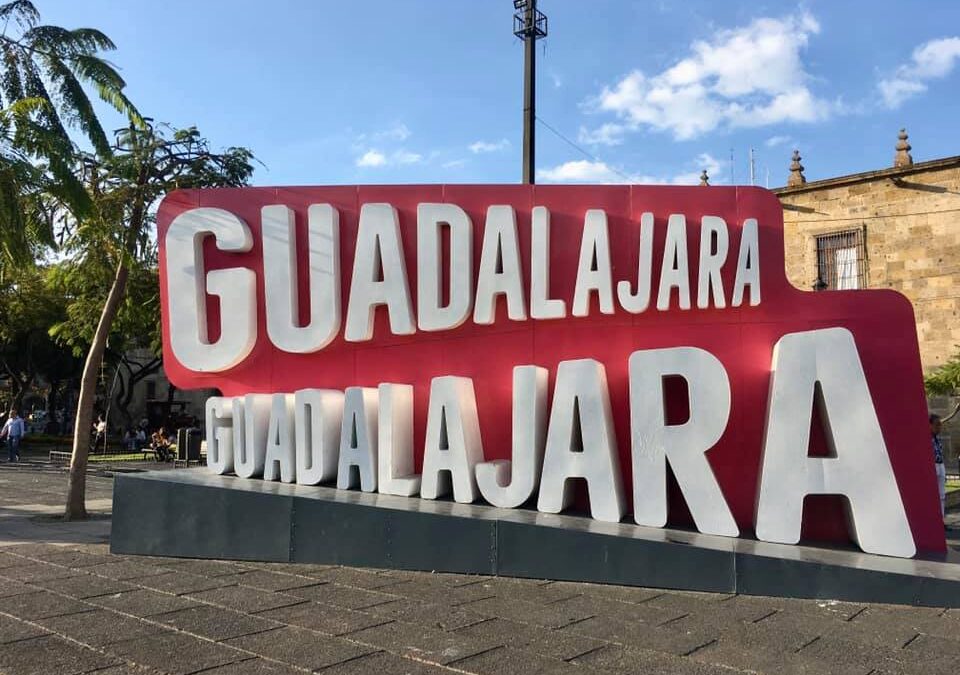
Visiter Guadalajara Mexique : 12 incontournables à voir en 2025
Capitale de l’État de Jalisco et 2ème plus grande ville du pays, Guadalajara est le berceau de la tequila et des mariachis. Pourtant, elle reste souvent dans l’ombre de Mexico ou Guanajuato.
C’est dommage, car la ville a beaucoup à offrir et nous a agréablement surpris : une ambiance authentique, des places vivantes, une gastronomie généreuse et un parfait mélange entre modernité et traditions. On comprend mieux pourquoi on dit souvent : « Jalisco es México«
Avec un aéroport international et des connexions faciles en bus, c’est une destination pratique à intégrer à votre itinéraire. Et si une journée suffit pour voir les essentiels de Guadalajara, on vous conseille vivement d’y passer une nuit, histoire de profiter aussi des alentours comme Tlaquepaque, du marché artisanal de Tonalá ou de partir en excursion dans la ville de Tequila.
Voici donc notre sélection des 10 lieux à ne pas manquer si vous décidez de visiter Guadalajara au Mexique.
📌 Mini-guide pratique
pour visiter Guadalajara
🛬 Comment se rendre à Guadalajara
La ville dispose d’un aéroport international (GDL) bien connecté aux grandes villes mexicaines et nord-américaines. Depuis Mexico City, comptez 1h15 de vol ou 6 à 7h de bus.
🗓️ Quand partir à Guadalajara
La meilleure période va de novembre à avril, avec un temps sec et ensoleillé. Évitez la saison des pluies (juin à septembre) si vous souhaitez profiter pleinement des visites à pied et des excursions.
🏨 Où loger à Guadalajara
Le centre historique est parfait pour les visites culturelles à pied. La Zona Chapultepec est plus animée, idéale pour les sorties.
Hébergements recommandés :
- Hotel San Francisco Plaza : pour l’emplacement central et son charme colonial
- Hotel Olá Chapultepec : pour l’emplacement et le confort
🌟 Tours et excursions immanquables
- Balade dans le centre historique et à Tlaquepaque
- Excursion à Tequila avec visite de distilleries
1/ La cathédrale de Guadalajara
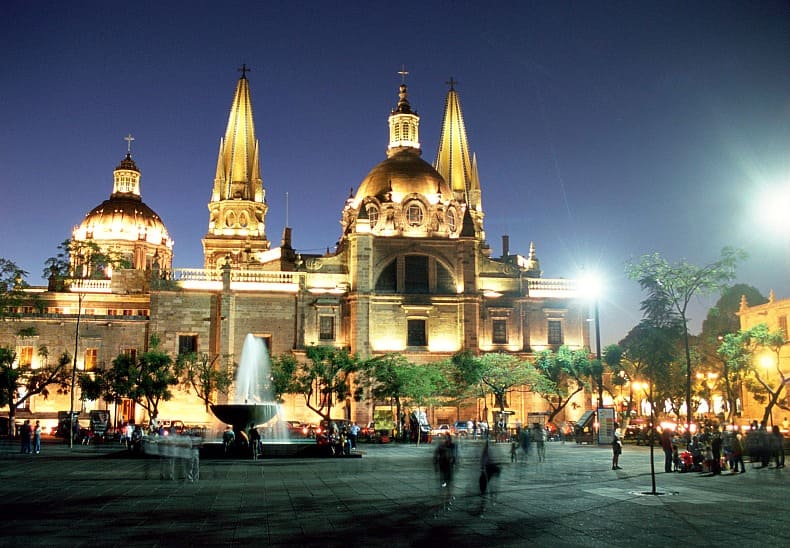
Commencez votre visite de Guadalajara sur la Plaza de Armas, au cœur du centre historique, dominée par la cathédrale de Guadalajara, sans doute le monument le plus emblématique de la ville.
Construite au XVIe siècle sur ordre du roi Philippe II d’Espagne, puis reconstruite après plusieurs séismes, elle mélange style baroque et tours néogothiques, reconnaissables à leurs tuiles jaunes. À l’intérieur, prenez le temps d’admirer les chapelles latérales et l’autel principal, richement décoré.
Sous l’autel se cache une ancienne crypte où reposent plusieurs évêques, ainsi que des tunnels secrets utilisés pendant la Guerre des Cristeros. Le soir, la cathédrale s’illumine : un petit détour au coucher du soleil vaut vraiment le coup.
🕦 Horaires : tous les jours de 9h à 18h
📍Comment y accéder : à pied depuis le centre, ou en métro station Plaza Universidad (ligne 2)
2/ Rotonda de los Jaliscienses Ilustres
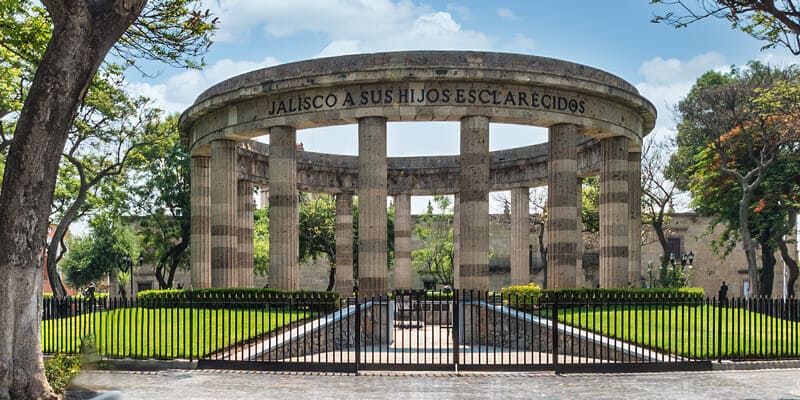
Continuez votre visite à quelques pas de la cathédrale. Vous y trouverez la Rotonde des Jalisciens Illustres, un monument circulaire en pierre soutenu par 17 colonnes, avec l’inscription « Jalisco a sus hijos esclarecidos » (Jalisco à ses enfants éclairés), entouré d’arbres et de statues.
Ce lieu rend hommage aux personnalités qui ont marqué l’histoire de l’État de Jalisco. À l’intérieur, 98 urnes contiennent les restes de figures importantes, tandis qu’autour de la rotonde, 22 statues rendent hommage aux grands noms de la politique, de l’art ou de la science.C’est un bel arrêt pour en apprendre plus sur l’identité de Jalisco.
🕦 Horaires : accessible librement à toute heure
📍Comment y accéder : à pied depuis la cathédrale (2 minutes à peine)
3/ Palacio de Gobierno
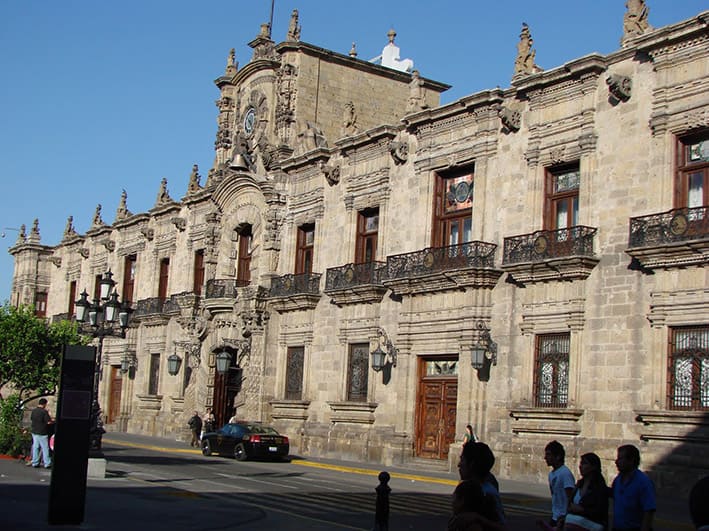
Toujours dans le centre historique, autour des quatre places qui forment la Cruz de Plazas autour de la cathédrale, ne manquez pas le Palais du Gouvernement de l’État, l’un des lieux les plus marquants à visiter à Guadalajara.
Construit en 1790, ce bâtiment abrite aujourd’hui le gouvernement de l’État de Jalisco. C’est ici qu’a été proclamée l’abolition de l’esclavage en Nouvelle-Espagne. À l’intérieur, ne manquez pas les murales spectaculaires de José Clemente Orozco, en particulier le portrait monumental du libertador Miguel Hidalgo.
🕦 Horaires : tous les jours de 9h à 17h
📍 Comment y accéder : à pied depuis la cathédrale ou la Plaza de Armas (2 à 3 minutes)
4/ Visiter Guadajalara : le Teatro Degollado
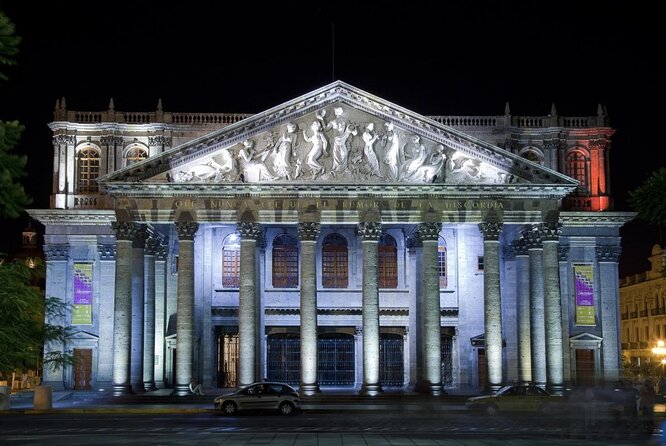
Parmi les plus beaux bâtiments de Guadalajara, le Teatro Degollado mérite largement le détour. Construit au milieu du XIXe siècle en l’honneur du général Santos Degollado, il affiche un style néoclassique inspiré des théâtres italiens.
Sa façade majestueuse, avec 16 colonnes et un relief en marbre représentant Apollon et les neuf muses, évoque un véritable temple grec. À l’intérieur, vous découvrirez un vestibule élégant menant à la grande salle, où se produit notamment l’Orchestre Philharmonique de Jalisco.
🕦 Horaires : consultez les horaires des visites guidées et des représentations sur le site officiel
📍Comment y accéder : à pied depuis la Plaza de Armas ou la cathédrale (moins de 5 minutes)
5/ Le musée régional de Guadalajara

Pour mieux comprendre l’histoire de la ville et de l’État de Jalisco, je vous recommande une halte au museo régional de Guadalajara, situé tout près de la Plaza de la Liberación, entre le Palais Législatif et celui de la Justice.
Installé dans un ancien collège du XVIIIe siècle, le bâtiment impressionne par sa façade baroque, ses patios calmes et son escalier monumental. À l’intérieur, les collections sont variées : fossiles (même celui d’un Mammouth), objets archéologiques, œuvres picturales… parfait pour enrichir votre visite d’un peu de contexte historique.
Pour finir votre visite du centre historique de Guadalajara en beauté, faites comme les habitués : sortez du musée et allez boire un verre à la Cantina La Fuente, institution mythique de Guadalajara, avec sa fameuse bicyclette rouillée accrochée au mur.
🕦 Horaires : du mardi au dimanche, de 9h à 16h30
📍 Comment y accéder : à pied depuis la cathédrale ou la Plaza de la Liberación (moins de 5 minutes)
Consultez également notre article « se déplacer au Mexique » pour organiser vos trajets en toute simplicité.
6/ Le marché San Juan de Dios

Depuis le musée régional, suivez la Calle Morelos, traversez la Plaza Tapatía et passez devant la Fuente de los Niños Meones — une œuvre joyeuse du sculpteur Miguel Miramontes — jusqu’à atteindre le marché San Juan de Dios, un autre incontournable à Guadalajara.
Avec ses plus de 4 000 m² et ses centaines de stands, c’est tout simplement l’un des plus grands marchés couverts d’Amérique latine. On y trouve de tout : artisanat local, vêtements, aliments frais, plats préparés, bijoux, friandises… le tout à des prix très accessibles.
Si vous préférez manger en dehors du marché, on vous recommande deux adresses locales très populaires : La Chata et La Gorda, où vous pourrez goûter les spécialités du coin comme la birria, la carne en su jugo ou les fameuses tortas ahogadas.
🕦 Horaires : tous les jours de 8h à 20h
📍Comment y accéder : à pied depuis la Plaza Tapatía ou en métro, station San Juan de Dios (ligne 2)
7/ L’Hospicio Cabañas, site classé à l’UNESCO
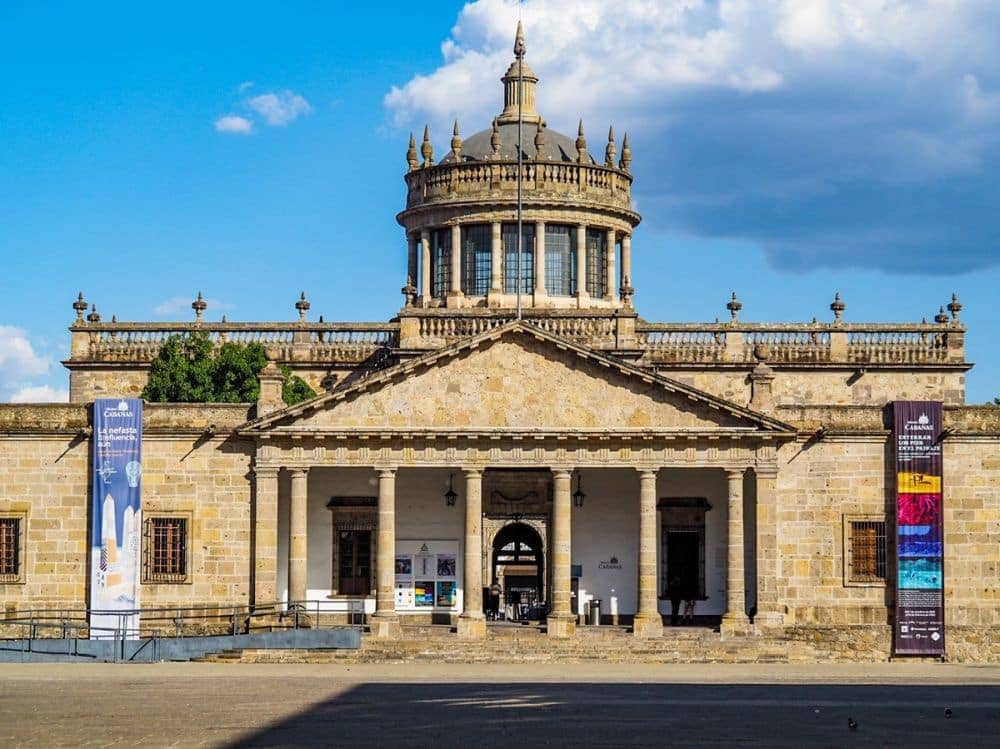
Proche du marché San Juan de Dios, l’Hospicio Cabañas est l’un des lieux à visiter à Guadalajara. Classé au patrimoine mondial de l’UNESCO, ce bâtiment néoclassique construit entre 1801 et 1810 a longtemps été l’un des orphelinats les plus importants d’Amérique latine.
Il a accueilli pendant plus d’un siècle enfants, personnes âgées et démunis, avant d’être transformé en caserne militaire pendant la guerre d’indépendance.
Aujourd’hui, l’Hospicio abrite un musée d’art, célèbre pour ses murales saisissants de José Clemente Orozco, dont le fameux « El hombre en llamas » (l’homme en feu), et accueille également des expositions d’art moderne et contemporain.
🕦 Horaires : du mardi au dimanche, de 11h à 17h
📍Comment y accéder : à pied depuis le marché San Juan de Dios ou la Plaza Tapatía (moins de 10 minutes)
8/ Tlaquepaque et son artisanat (coup de ❤️)
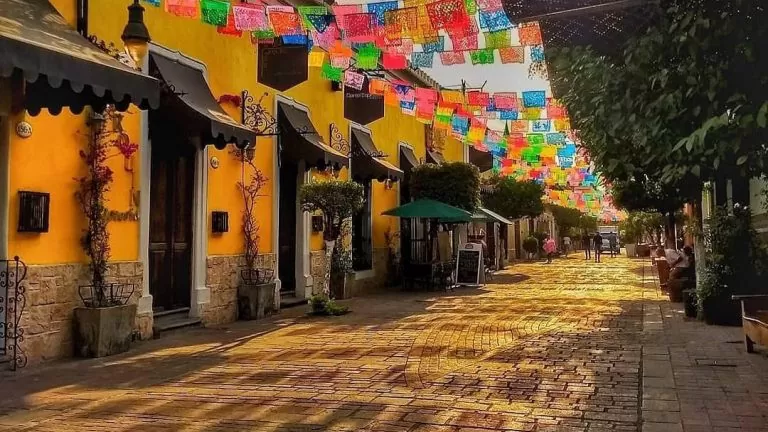
À 8 km du centre, la ville de San Pedro Tlaquepaque fait partie de l’agglomération de Guadalajara et est l’un des hauts lieux de l’artisanat mexicain.
C’est aussi l’un de mes endroits préférés à Guadalajara : j’adore m’y balader, entrer dans les ateliers d’artistes, et m’installer en terrasse pour siroter un cantarito, un cocktail rafraîchissant à base de tequila, jus d’agrumes et sel de piment.
La rue piétonne Andador Independencia est le cœur du quartier. Vous y trouverez des boutiques de qualité, des galeries colorées et peut-être, comme moi, craquerez-vous pour une catrina artisanale unique.
📍Comment y accéder : en Uber (15 à 20 minutes depuis le centre) ou avec le bus touristique
💡Bon à savoir : des visites guidées combinent Tlaquepaque et le centre historique de Guadalajara pour une immersion complète.
Pour vous aider à préparer votre itinéraire, n’hésitez pas à consulter notre article « où partir au Mexique« .
9/ Plaza de los Mariachis
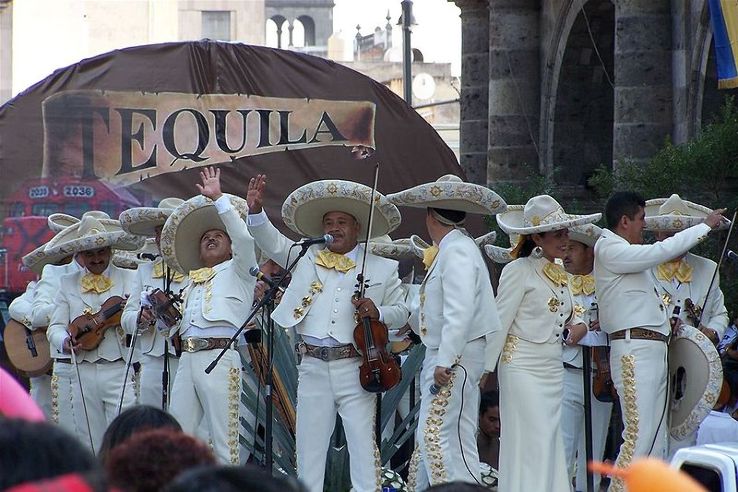
Impossible de visiter Guadalajara au Mexique sans passer par la Plaza de los Mariachis, un lieu animé où la musique traditionnelle prend tout son sens. Installez-vous à une terrasse, commandez quelques antojitos (snacks mexicains) ou un verre de tequila, et laissez-vous porter par les mariachis en live ou les danses folkloriques.
Située sur la Calzada de la Independencia, cette place colorée est bordée de vieilles bâtisses abritant des bars et restaurants chaleureux — parfaits pour passer une soirée festive à la mexicaine.
🕦 Horaires : animation surtout en fin de journée et soirée
📍 Comment y accéder : en métro, station Belisario Domínguez ou à pied depuis San Juan de Dios (10 min)
10/ Marché artisanal de Tonalá
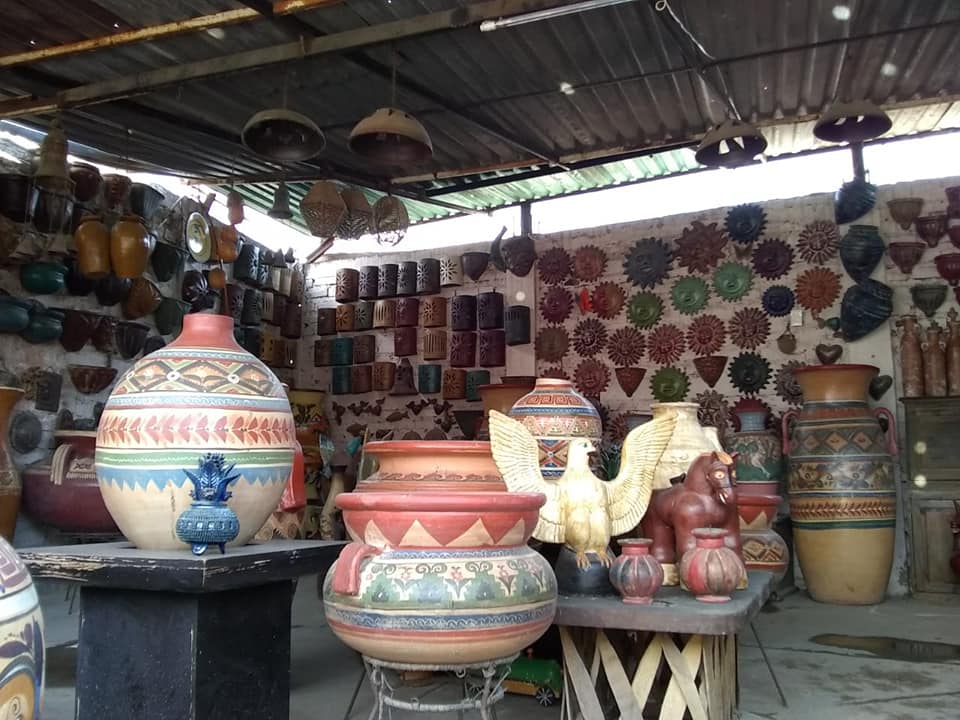
Si vous aimez l’artisanat mexicain, ne manquez pas une visite à Tonalá, surtout un jeudi ou un dimanche, quand les rues s’animent de stands et de boutiques ouvertes en continu.
Tonalá fait partie de la zone métropolitaine de Guadalajara et se rejoint facilement avec le bus touristique qui dessert aussi Tlaquepaque, au départ de la Rotonde des Jalisciens Illustres.
Sur place, flânez librement dans les ruelles pleines de créations en terre cuite, de pièces uniques faites main et de stands de nourriture locale. Une sortie idéale pour chiner, discuter avec les artisans et goûter des spécialités régionales.
🕦 Horaires : marché en plein air actif les jeudis et dimanches de 9h à 17h
📍Comment y accéder : en bus touristique ou en Uber (30–40 min depuis le centre)
11/ Ville de Tequila
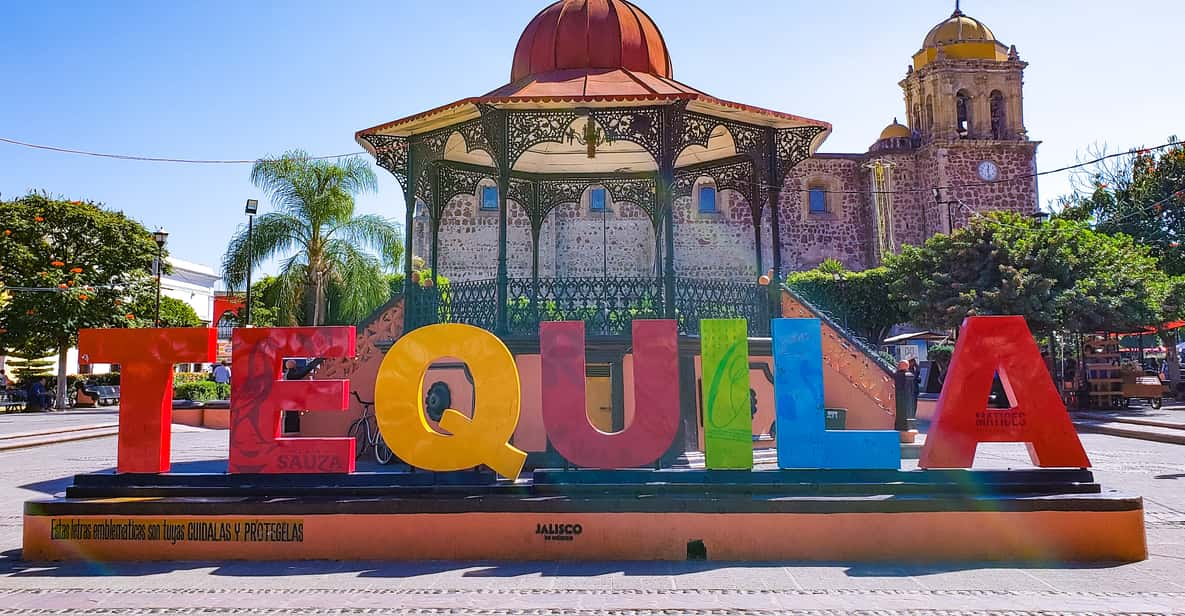
Si vous avez un peu plus de temps à Guadalajara, prenez la route vers la ville de Tequila, à 1h30 de la ville. C’est un passage obligé pour comprendre l’histoire et la culture du spiritueux du même nom, emblème du Mexique et indissociable de la région de Jalisco.
Entourée de champs d’agave bleu classés au patrimoine mondial de l’UNESCO, cette petite ville colorée vit au rythme des distilleries et des traditions.
Parmi les plus connues, José Cuervo et Casa Sauza proposent des visites guidées, avec dégustation et explications sur le processus de fabrication. Vous pouvez aussi explorer le musée national du tequila ou simplement flâner dans les rues pleines de charme.
🔍 Horaires : les distilleries sont ouvertes tous les jours, généralement de 10h à 17h
📍Comment y accéder : en voiture, en bus (depuis la Nueva Central Camionera) ou avec une excursion organisée depuis Guadalajara.
👉 Pour une journée sans stress, n’attendez pas d’être sur place et réservez une excursion organisée à Tequila avec transport, guide et dégustations incluses.
12/ Escapade au lac Chapala
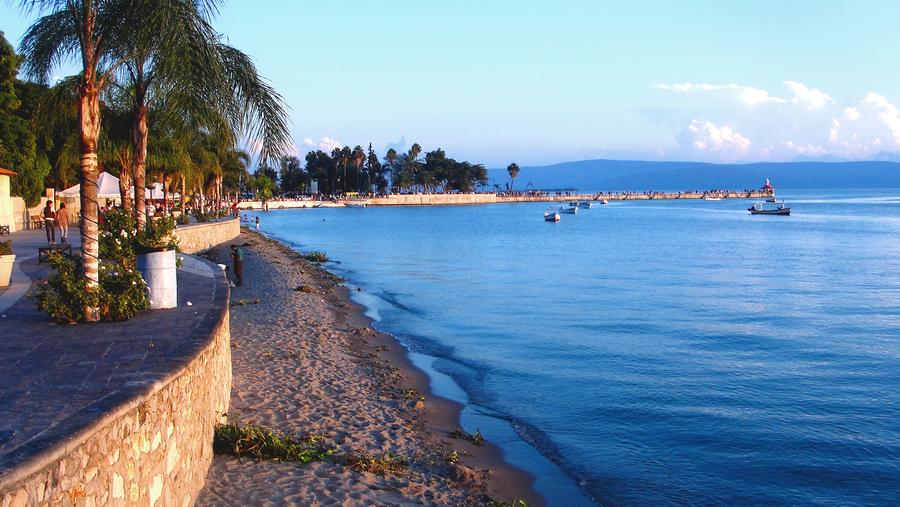
À une heure au sud de Guadalajara, le lac Chapala est le plus grand lac naturel du Mexique. Bordé de petits villages colorés, il offre un cadre paisible, idéal pour s’éloigner de l’agitation urbaine et profiter d’un air plus frais.
Vous pouvez flâner sur la promenade du malecón à Chapala, ou faire un détour par Ajijic, village artistique apprécié des expatriés pour son ambiance bohème, ses galeries d’art et ses cafés face au lac. C’est une escapade parfaite pour une demi-journée, entre nature, culture et détente.
🕦Horaires : idéal en journée, surtout le matin en semaine pour éviter la foule
📍Comment y accéder : en voiture ou en bus depuis la Nueva Central Camionera (environ 1h de trajet) ou en excursion organisée avec promenade en bateau.







